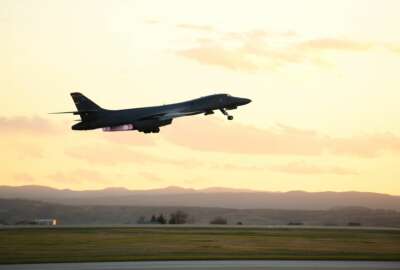

The Joint Artificial Intelligence Center is helping the military with its supply chain during COVID-19.
The Defense Department’s artificial intelligence hub is using some of its technical savvy to help the United States respond to the coronavirus. It’s also learning how it can operate in a quarantined world, but the leader of the Joint Artificial Intelligence Center says it still has work to do in employing the people it needs.
The Joint Artificial Intelligence Center (JAIC) started using its expertise for Project Salas at the beginning of the coronavirus crisis. That project takes in data to deliver predictive analytics on supply chain risk caused by the disease.
JAIC now has more than 40 predictive models it is sharing with U.S. Northern Command and the National Guard to help them with their responses to coronavirus. The models inform leaders deciding on national and state resources allocation.
“Can we give them sufficiently high probability determinations that allow them to make some of those decisions in advance?” JAIC Director Lt. Gen. Jack Shanahan said Friday during a Center for Strategic and International Studies event. “The models are in very different stages of development and I will not claim victory on any of them. They are in MVP status or even below that, but we are sharing those with our customers and we are getting very good feedback.”
Shanahan said that data comes from 75 different government and public sources. JAIC is working more than ever on ease-of-use instead of just throwing data at commanders.
As far as working in the atmosphere of the pandemic, the JAIC workforce is at about 90% telework.
“Surprisingly we’ve been far more effective than I would have ever anticipated two and a half months ago when this all started because we weren’t built as an organization with teleworking, we were just trying to build the organization,” Shanahan said. “Turns out we actually accomplished more in the last two months than I think we accomplished in the previous six months because everyone is so focused on the problems at hand.”
Shanahan said the levels of sophistication and maturity he is seeing out of the organization in the missions shows him they will be unstoppable over the course of the next year.
That’s good news for the director who already put in his intent to retire after nearly 40 years of service.
One caveat to the telework is that JAIC has not had to telework with a lot of classified information yet; that will change further in the future.
Classified networks inherently mean slower work due to security and that can be a problem when trying to attract talent.
“In the first year we didn’t have AI experience to bring in because there was a dearth of talent on AI across the services. If they were out there they were on the research and development side and they weren’t made available to JAIC,” Shanahan said.
Shanahan said JAIC is focusing on upscaling its workforce through training, lectures from though leaders and other initiatives.
To bringing in more talent and to nurture interest in AI, Shanahan said the military needs to ingrain coding and into the training of every service member from senior leaders to the lowest levels.
“It’s a top down and a bottom up and it all needs to happen simultaneously,” he said. “To say that is a formidable task would be a gross understatement.”
JAIC is already tasked by Congress to lead that effort, but it will evolve many components within the military.
Copyright © 2025 Federal News Network. All rights reserved. This website is not intended for users located within the European Economic Area.
Scott Maucione is a defense reporter for Federal News Network and reports on human capital, workforce and the Defense Department at-large.
Follow @smaucioneWFED



